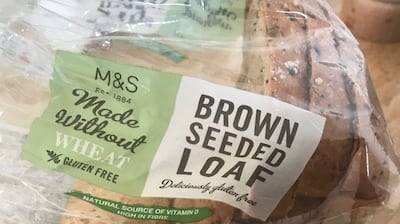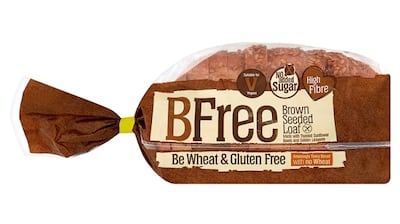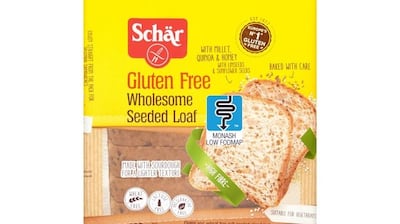It’s really not so long since gluten-free bread came in tiny loaves that crumbled on a whim and didn’t taste very good. That has changed in recent years and it can now be hard to tell whether the sliced pan you are eating is gluten-free or not, especially with brown loaves.

Gluten-free bread looks the part and tastes good too, though it is expensive. So is that because it is worth it? Is it a better product?

For coeliacs, the answer is yes. That’s because taking in gluten, which is a name for a family of proteins found in wheat, barley and rye, can cause a severe response in their digestive systems. The lining of the small intestine can be damaged hampering the body’s ability to absorb nutrients from food properly. So it’s gluten-free bread or none for them.
For others, it may be a waste of money.
First glance
The label on gluten-free brown bread can help to show why. At first glance it is quite shocking. On most brands, the list of ingredients is long. Some, such as the brown seeded loaves from Marks & Spencer and Dublin brand BFree, have more than 30 ingredients with some very unfamiliar ones such as glucono-delta-lactone (E575).

That’s because gluten is a large part of what makes bread look and taste like bread. It gives dough strength and elasticity, allows it to rise and creates that chewy texture. Recreating the sensation of eating wheat, barley and rye bread mostly flour made from rice, potato or corn is not easy.
Brennan’s gluten-free brown bread is a case in point. To create a flour mix, it uses rice flour, tapioca starch, maize starch, potato starch, rice bran, hulled millet and wholegrain maize flour. For added fibre and texture, it uses sugar beet fibre, psyllium husk powder, methyl cellulose, sodium carboxymethyl cellulose, hydroxypropyl methylcellulose, xanthan gum and chia seeds. These are generally plant-derived, though hydroxypropyl methylcellulose is an odourless and tasteless powder that is a synthetic modification of cellulose. Psyllium husk powder, which comes from a type of plantain, is sold in health food shops and can be taken to help ease constipation. It is the main active ingredient in Metamucil. Some can find these ingredients upset their tummies.


Among the other ingredients you might not see in standard processed bread are the preservatives, sodium propionate and sorbic acid. Sweetness and colour is achieved with the use of concentrated prune juice, dried plums and sugar.
Marks and Spencer’s long list of ingredients in its brown seeded loaf includes bamboo fibre, which sounds off-putting but is just another plant fibre really. It includes added B vitamins and vitamin D.
German brand Schar, a favourite with coeliacs, has a much smaller list of ingredients in its “wholesome” seeded loaf, though it relies on soya, another allergen, as a main ingredient. It has just one added thickener.
Dedicated
Most gluten-free options are highly processed and no better or worse than other such breads. An exception may be those loaves made using oats.
There is no gluten in oats, but they can be contaminated if processed in the same factory as wheat, barley or rye. Coeliacs can respond severely to even a few crumbs, hence the need for separate production facilities. McCambridge uses gluten-free oats to make its gluten-free soda bread at a dedicated facility in Rathcoole, Co Dublin. The staff even have separate a changing areas from those involved in making regular soda bread.
The soda bread is made from buttermilk (40 per cent), oatmeal, pea flour, oatflakes, oat flour, sodium bicarbonate, coconut sugar, salt and rice flour.
When dieticians say that gluten-free diets are unhealthy for those who are not coeliacs, the real concern is that those cutting out gluten miss out on the fibre, vitamins and minerals in wheat, barley and rye.

Having gluten-free bread some days and regular bread on others won’t do the average person any harm. It is unlikely to do any good either particularly for those with real digestive issues as there is gluten in some form in most ready meals, cakes, biscuits and sauces.
Anyone with concerns would do better to consult a doctor who can do a blood test for diagnosis.
Do that before going gluten free. Once a person has avoided gluten for a while, it becomes more difficult to establish if that is the problem.
FOOD LABELS SERIES
- Bread
- Soup
- Crisps
- Sliced ham
- Cream crackers
(search other food labels articles here)















